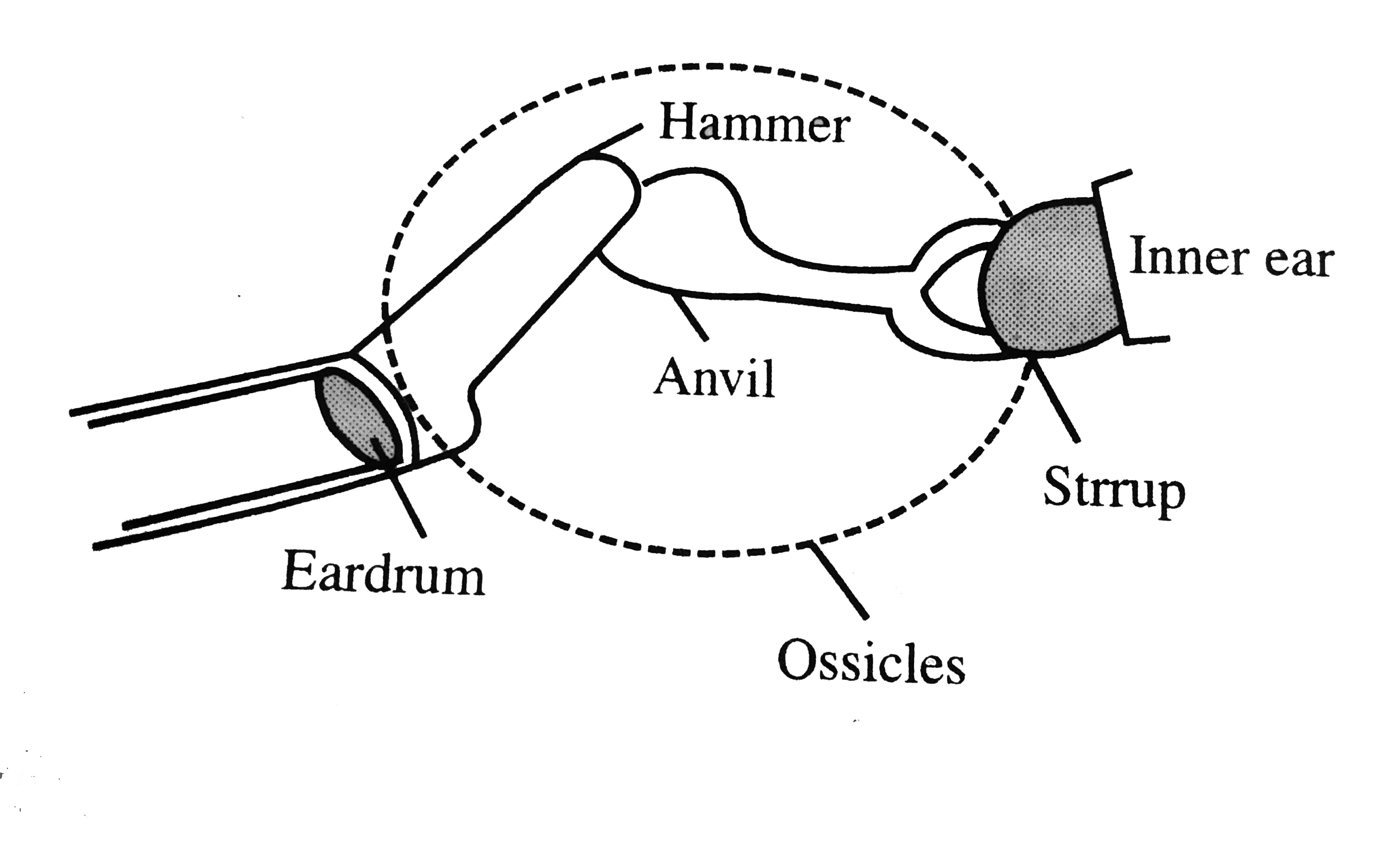Mechanism through which a sound produces a nerve impulse in the inner ear.
Mechanism of hearing : Sound waves strike pinna. Then waves are conducted through auditory canal to the tympanum which begins to vibrate. Vibrations from the tympanum are conducted upto the membrane of fenestra ovalis. This conduction is done by ear ossicles. Vibrations now enter the perilymph of scala vestibuli. This causes vibration in the Ressner.s membrane. These vibration now enter the endolympyh of scala media. Vibrating endolymph of scala media causes vibration in Basilar membrane. The sensory hairs of organ of corti undergoes bending. This bending causes stimulation of sensory cells. Stimulation of sensory cells creat the impulse of hearing. It is carried to brain by fibres of cochlear branch of auditory nerves of cochlear branch of auditory nerve. The high frequency resonance of basilar membrane occurs near the base. Here sound waves enter the cochlea. Low frequency resonance occurs near the apex. This is because of stiffness of fibres of basilar membrone.
Similar Questions
Knowledge Check
- Question 1 - Select One
A spinal nerve takes nerve impulses
Ato the CNSBaway from the CNSConly inside the CNSDonly from the cerebrum - Question 2 - Select One
A spinal nerve takes nerve impulses :
Ato the CNSBaway from the CNSCboth to and away from the CNSDonly inside the CNS - Question 3 - Select One
Direction of nerve impulse is reversed in nerve with
AAxo-axonicBAxo-dendriticCAxo- axondendriticDNone of the above.

When a sound wave enters the ear, it sets the eardrum into oscillation, which in turn causes oscillation of 3 tiny bones in the middle ear called ossicles. This oscillation is finally transmitted to the fluid filled in inner portion of the ear termed as inner ear, the motion of the fluid disturbs hair cells within the inner ear which transmit nerve impulses to the brain with the information that a sound is present. The theree bones present in the middle ear are named as hammer, anvil and stirrup. Out of these the stirrup is the smallest one and this only connects the middle ear to inner ear as shown in the figure below. The area of stirrup and its extent of connection with the inner ear limits the sensitivity of the human ear consider a person's ear whose moving part of the eardrum has an area of about 50mm2 and the area of stirrup is about 5mm2. The mass of ossicles is negligible. As a result, force exerted by sound wave in air on eardum and ossicles is same as the force exerted by ossicles on the inner ear. Consider a sound wave having maximum pressure fluctuation of 4×10−2Pa from its normal equilibrium pressure value which is equal to 105Pa. Frequency of sound wave in air is 332ms. Velocity of sound wave in fluid (present in inner ear) is 1500ms. Bulk modulus of air is 1.42×105Pa. Bulk modulus of fluid is 2.18×109Pa.
Q. If the person is using an hearing aid, which increase the sound intensity level by 30 dB, then by what factor the intensity of given sound wave change as perceived by inner ear?View SolutionName the nerve which carries electrical impulses from the cochlea of ear to the brain.
View SolutionChemicals by which nerve impulses transmit through one neuron by another are
View SolutionThe vibrations produced in the ear drum are transmitted through the ear ossicles to the fluid filled inner ear via -
View SolutionA short period during which a nerve is unable to nerve impulse is called :
View Solution

